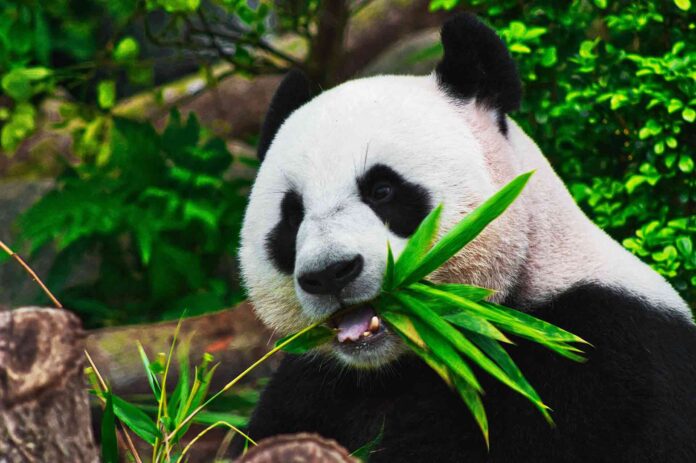In a groundbreaking discovery, researchers have unlocked the mystery behind how pandas manage to thrive and gain weight primarily on a bamboo diet. This revelation sheds light on the unique adaptations and biological mechanisms that enable these beloved bears to flourish despite their seemingly limited nutritional intake.
The Bamboo Conundrum
For decades, scientists have puzzled over how pandas, classified as carnivores yet predominantly herbivorous, sustain themselves on a diet consisting almost exclusively of bamboo. Unlike other herbivores, pandas lack the digestive adaptations typical of animals that consume plant matter, such as specialized enzymes or multiple stomach compartments.
Insights from Recent Studies
Recent studies have provided crucial insights into the panda’s ability to thrive on bamboo. Researchers discovered that pandas possess unique gut microbiota rich in bacteria capable of breaking down tough plant fibers found in bamboo. These specialized microbes produce enzymes that aid in the digestion of cellulose and hemicellulose, key components of bamboo that are otherwise challenging for most animals to process.
Adaptations for Efficient Nutrient Extraction
In addition to their specialized gut microbiota, pandas have developed physiological adaptations that enhance their ability to extract nutrients from bamboo. These adaptations include a slow metabolic rate, allowing for prolonged digestion and absorption of nutrients from the fibrous plant material. Furthermore, pandas exhibit behaviors such as prolonged chewing and selective feeding, which maximize the intake of nutrient-rich parts of bamboo while minimizing energy expenditure.
Nutritional Composition of Bamboo
Contrary to common perception, bamboo is not inherently nutrient-poor. It contains essential nutrients such as proteins, carbohydrates, and vitamins, albeit in quantities that vary depending on species and growth stage. Pandas have evolved to capitalize on these nutritional elements through their specialized digestive physiology and feeding behaviors, ensuring they meet their dietary requirements for growth and sustenance.
Conservation Implications
Understanding how pandas thrive on a bamboo diet has significant implications for conservation efforts aimed at preserving these endangered species. By elucidating the nutritional strategies and adaptations that support panda health, researchers can inform habitat management practices and captive breeding programs to better replicate natural dietary conditions and promote panda well-being.
Conclusion
The discovery of how pandas are able to gain weight on a bamboo diet underscores the remarkable adaptability and resilience of these iconic creatures. Through a combination of specialized gut microbiota, physiological adaptations, and behavioral strategies, pandas have mastered the art of thriving on a diet that would challenge most other animals. As research continues to unravel the complexities of panda nutrition, it reinforces the importance of holistic conservation approaches that consider dietary needs alongside habitat preservation.
By exploring these findings in depth, this article aims to provide a comprehensive understanding of the mechanisms behind pandas‘ ability to gain weight on a bamboo diet, offering insights into their unique evolutionary adaptations and nutritional strategies.

